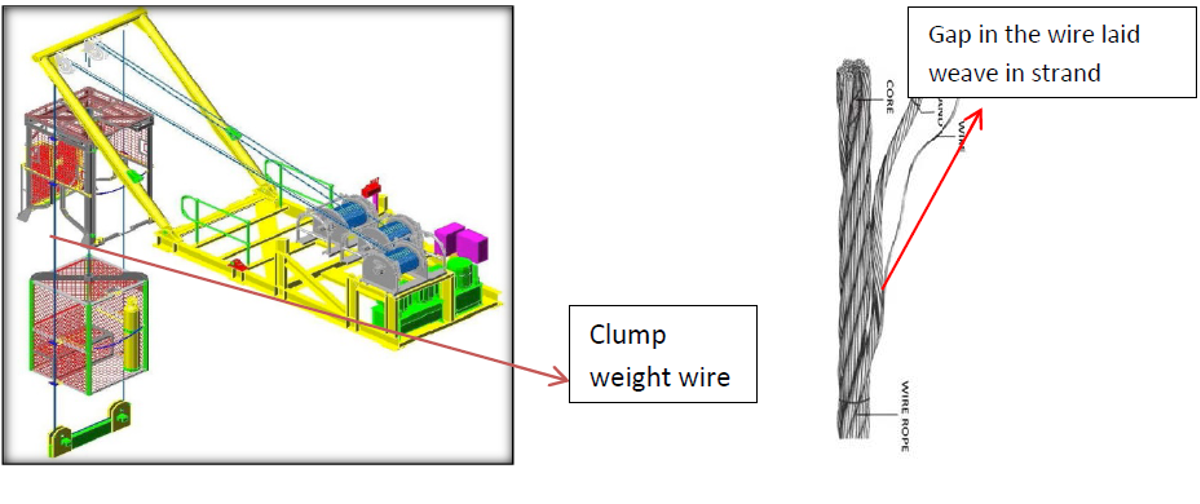Near-miss: Fault spotted in subsea lifting wire
- Safety Flash
- Published on 15 June 2017
- Generated on 15 December 2025
- IMCA SF 15/17
- 2 minute read
Jump to:
During diving operations at 10 msw, it was noticed that there was a slight gap in the lay of the diver launch and recovery (LARS) clump weight wire.
What happened?
The diver was asked to visually inspect the affected area. It was observed on the divers’ helmet camera, and afterwards confirmed by the diver, that no rope strand was broken, only that there was strand protrusion from the rope lay/weave.
The following day the rope was re-checked by the dive team & client and a few strands of the clump weight rope were found to be out of the rope lay/weave.

What lessons were learned? And what were the actions?
- Ropes should be monitored frequently to avoid stress due to uneven movements and weather conditions, and an appropriate record kept.
- Ropes and sockets should be inspected before each dive.
- Any small defects, damage or abnormality on ropes should be reported immediately.
- Load testing should be carried out as appropriate after any changes and terminations.
- Precautions should be in place to avoid stress on ropes during diving caused by weather conditions.
- Ropes with core or strand protrusion should be immediately discarded or, provided the remaining length of rope is in a serviceable condition, have the affected section removed.
Members may also wish to review:
- IMCA D060, HSS019 LR006, M187 – Guidelines for lifting operations
Related safety flashes
-
IMCA SF 02/14
20 February 2014
-
IMCA SF 08/08
24 April 2008
IMCA Safety Flashes summarise key safety matters and incidents, allowing lessons to be more easily learnt for the benefit of the entire offshore industry.
The effectiveness of the IMCA Safety Flash system depends on the industry sharing information and so avoiding repeat incidents. Incidents are classified according to IOGP's Life Saving Rules.
All information is anonymised or sanitised, as appropriate, and warnings for graphic content included where possible.
IMCA makes every effort to ensure both the accuracy and reliability of the information shared, but is not be liable for any guidance and/or recommendation and/or statement herein contained.
The information contained in this document does not fulfil or replace any individual's or Member's legal, regulatory or other duties or obligations in respect of their operations. Individuals and Members remain solely responsible for the safe, lawful and proper conduct of their operations.
Share your safety incidents with IMCA online. Sign-up to receive Safety Flashes straight to your email.